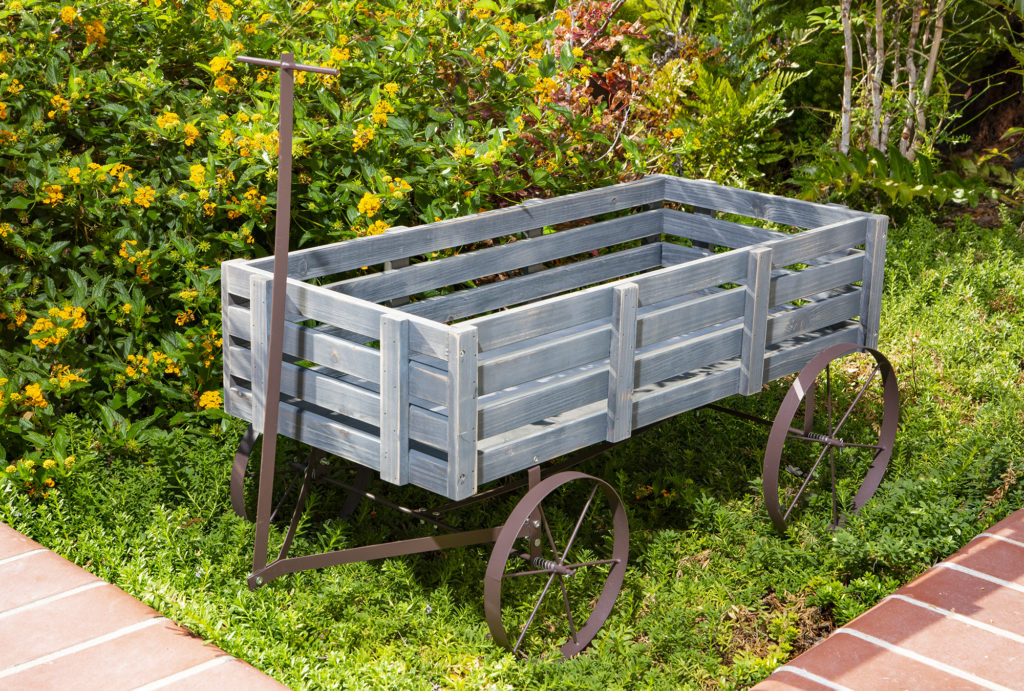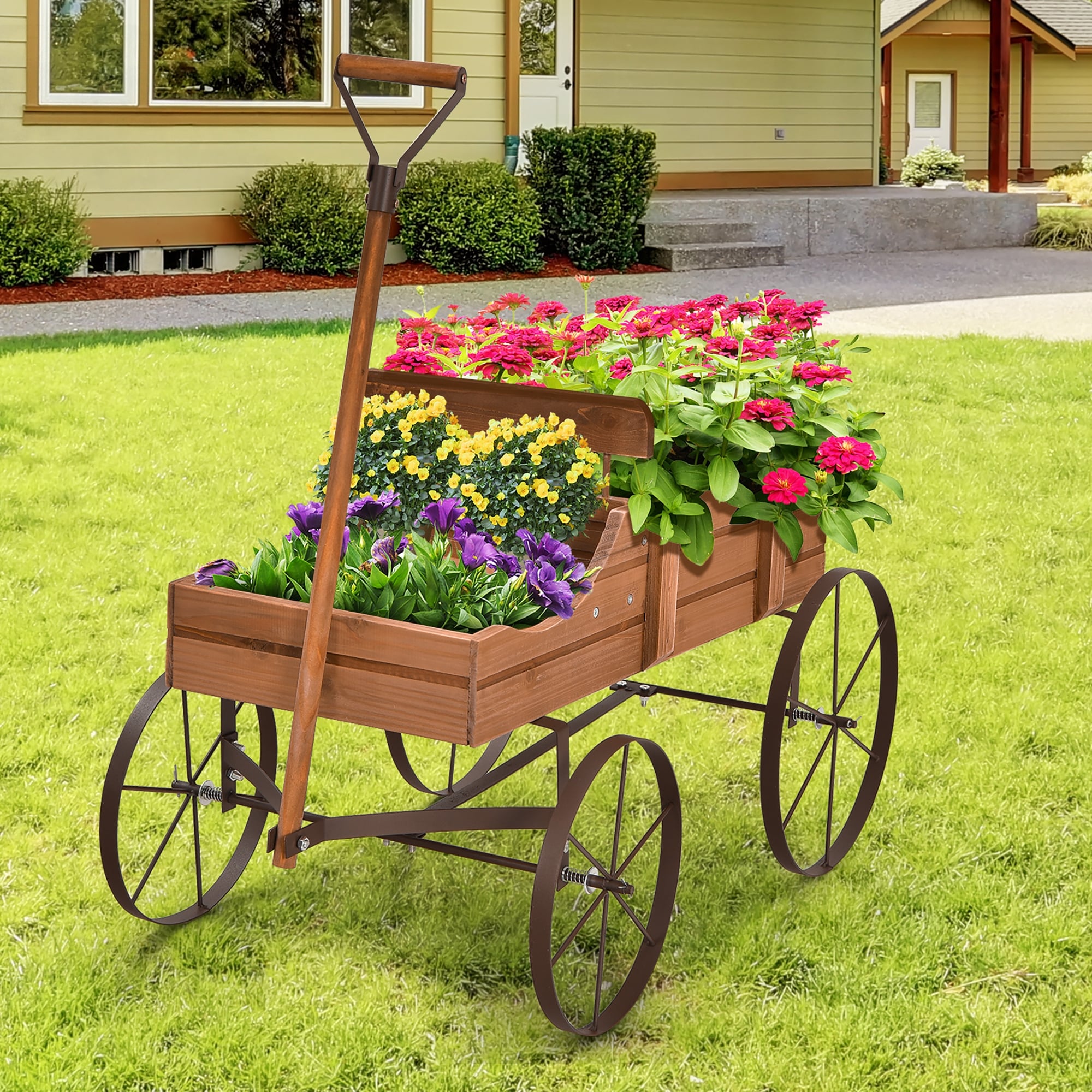Introduction to Decorative Wagons in the Garden
If you’re looking for a way to add a touch of whimsy and character to your garden, decorative wagons may be just the element you need. From vintage charm to modern designs, these pieces can transform your outdoor space into a picturesque retreat.
As someone who has spent countless afternoons arranging and rearranging garden decor, I can vouch for the magic a decorative wagon can bring. In this article, we’ll explore various styles, practical uses, care tips, and my personal experiences with decorative wagons in the garden.
Types of Decorative Wagons for Your Garden
When it comes to decorative wagons, the choices are plentiful. Below, we’ll unpack some of the most popular types.
1. Vintage Wooden Wagons
Vintage wooden wagons are charming and rustic. They often boast historical designs, complete with patinas that tell a story. These wagons can serve as the perfect backdrop for seasonal decorations.
2. Metal Garden Wagons
Metal garden wagons are durable and come in various colors. They can withstand the elements and are perfect for a contemporary garden setting.
3. Plastic or Resin Wagons
Lightweight and often less expensive, plastic or resin wagons are ideal for those who want flexibility in their garden decor. They are easy to move and available in many styles.

4. Adorned or Themed Wagons
Some decorative wagons feature specific themes, like fairy gardens, seasonal decorations, or even whimsical designs tailored for children’s spaces.
Choosing the Right Decorative Wagon for Your Garden
When selecting a decorative wagon, consider the following factors:

1. Size and Scale
Make sure the wagon fits well within your garden space. A large wagon can become a focal point, while a small one can accentuate other garden elements.
2. Material
Different materials offer various aesthetics and functionalities. Decide which fits your garden style and maintenance preferences.

3. Functionality
Consider how you plan to use the wagon. Will it hold plants, serve as a table, or simply act as art? This decision can guide your choice.
Comparison Table: Materials of Decorative Wagons
| Material | Benefits | Drawbacks |
|---|---|---|
| Wood | Classic look, sturdy | Can rot if not treated |
| Metal | Durable, weather-resistant | Can rust over time |
| Plastic/Resin | Lightweight, easy to move | Less aesthetic appeal |

Personal Experience: My Decorative Wagon Journey
When I first began my gardening adventure, I stumbled upon a charming vintage wooden wagon in a local flea market. The moment I saw it, I knew it had to be part of my garden. I envisioned filling it with vibrant flowers and seasonal decorations. It became a focal point in my garden and sparked joy and creativity.
Over the years, I’ve collected several wagons, each serving a unique role—from hosting perennials to displaying holiday decor. The versatility of decorative wagons has truly enriched my gardening experience.
Creative Ways to Use Decorative Wagons in Your Garden
Decorative wagons can serve various purposes in your garden beyond mere aesthetics. Here are some of my favorite ways to use them:

1. Plant Display
Fill your wagon with colorful flowers, herbs, or even small shrubs. This is an ideal way to bring life to a small garden area.
2. Seasonal Decorations
Wagons can be perfect for displaying seasonal decor. In fall, fill it with pumpkins and hay; in spring, showcase blooming flowers or Easter elements.

3. Unique Table Settings
Use a wagon as a rustic table for outdoor gatherings. Place dishes and drinks on it, or set it up for a charming picnic.
4. Kids’ Play Area
If you have children, a wagon can serve as a fantastic play area, encouraging imaginative play right in the garden.
Maintenance Tips for Decorative Wagons
To keep your decorative wagon looking its best, regular maintenance is essential. Here are some helpful tips:
1. Cleaning
Dust off your wagon regularly to prevent dirt buildup. For wooden wagons, use a wood-safe cleaner to maintain its finish.
2. Weather Protection
If your wagon is made of wood or metal, consider applying a sealant or paint to protect it from the elements.
3. Seasonal Care
Adjust the contents of your wagon according to the seasons for a fresh look throughout the year. Remove dead plants and replace them with seasonal flowers.
Pros and Cons of Decorative Wagons
Before committing to a decorative wagon, it’s vital to consider both the advantages and disadvantages.
Pros
- Adds unique character and charm to your garden.
- Versatile use for plants, decor, and gatherings.
- Variety of styles to suit any garden aesthetic.
Cons
- May require regular maintenance, especially wooden wagons.
- Some styles can be pricey, depending on craftsmanship.
- Can be bulky and take up space in smaller gardens.
Frequently Asked Questions About Decorative Wagons
What are the best plants to use in a decorative wagon?
Consider using vibrant annuals like petunias, or low-maintenance perennials such as succulents. Herbs like basil and thyme also thrive well.
Can I use a decorative wagon indoors?
Absolutely! Decorative wagons can serve as unique indoor planters or decorative pieces in a sunroom or entryway.
How can I protect my wagon from bad weather?
Applying a weatherproof sealant to wooden wagons and storing metal ones in a shed or garage during harsh weather can help prolong their lifespan.
Are decorative wagons suitable for small spaces?
Yes! Smaller wagons can fit perfectly in small gardens, balconies, or patios, offering a splash of color without overwhelming the space.